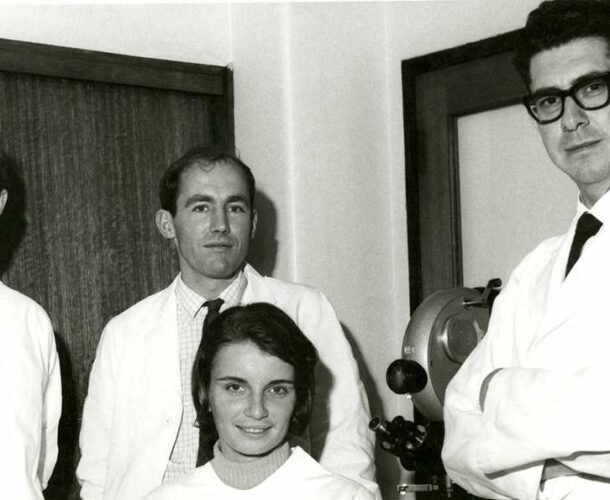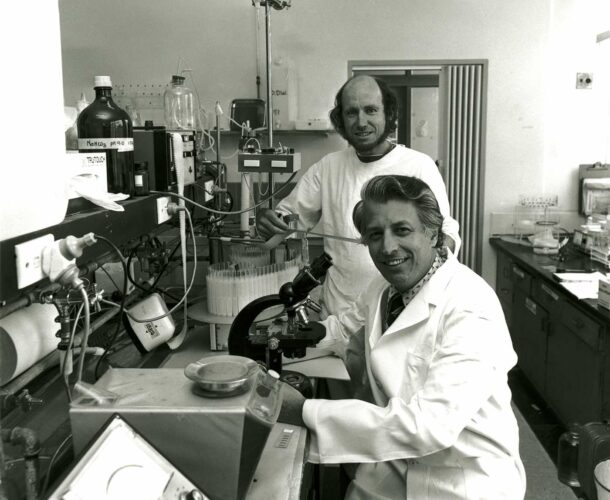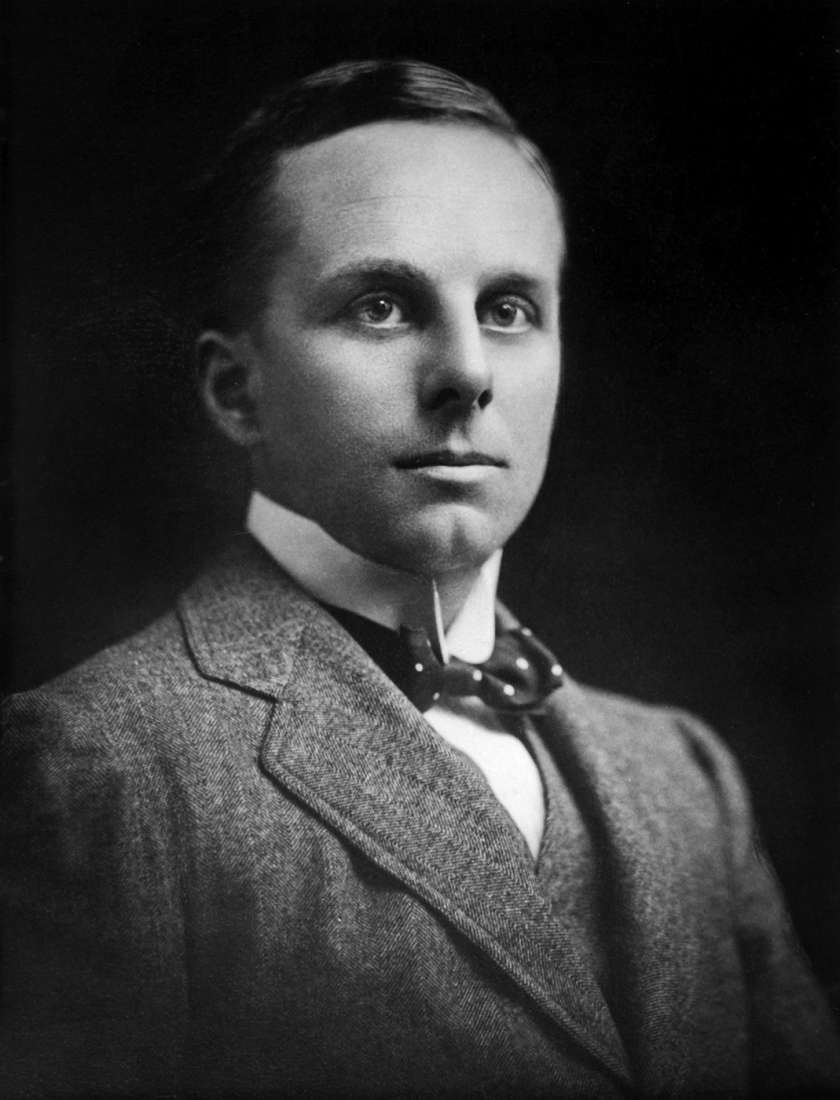From veterinary medicine and agricultural science to the immunology lab
As a PhD student in the 1960s, Graham Mitchell was a rare hybrid: a medical researcher with dirt under his fingernails. Mitchell travelled an unusual route, from veterinary medicine and agricultural science to the immunology lab at the Walter and Eliza Hall Institute.
It was an early sign of the intellectual curiosity and unflinching practicality that has seen Mitchell tackle tropical diseases abroad, forge bridges with industry at home, spawn a CV too expansive to reproduce here and attack intellectual complacency wherever he finds it. “A research scientist needs to be their own sternest critic,” he says.
Shot to glory, discovering the collaboration between T and B cells
Working under the renowned immunologist Dr Jacques Miller, as a young scientist Mitchell shot to glory with his contribution to a discovery about the collaboration between T and B cells, small lymphocytes — white blood cells – that had appeared similar under a microscope.
“We always thought that if we’ve seen one lymphocyte we’ve seen them all,” explains Mitchell, “But then we discovered at least two families.”
The T cells, derived from the thymus, the fan-shaped gland at the base of the neck, do not produce antibodies. The B cells come from bone marrow and do produce antibodies— but need help from the T cells to do so.
Mitchell took the discovery to his mentors. “You’d come to Jacques with any discovery and he’d give you three repeat experiments to perform before he’d let you say anything. (Sir) Gus (Nossal) on the other hand would get so excited he’d immediately tell me to start writing my Nobel Prize acceptance speech.”
The discovery led to a deeper understanding of the mechanism of infection that has also assisted in the fight against cancer and autoimmune disease. It came to prominence in the 1980s with the appearance of the HIV virus, which primarily targets T cells.
A new frontier in parasitism
Mitchell gained five years postdoctoral experience with leading immunologists in California, London and Basel. Returning to Australia in 1973 he made the characteristically counter-intuitive decision to switch his field of expertise in pure cellular immunology for a new frontier in parasitism.
“I knew that I had to differentiate myself so that I wouldn’t forever be ‘that bright young thing who worked for Jacques’. So I thought, ‘right, I’ve got a background as a vet. We’ve got this new kitbag of biological tools. What kind of things can I easily slot into that make use of all these?’’’
He got thinking about the foetal-maternal relationship and the host-parasite relationship. Why is a ‘half-foreign’ foetus not rejected by the mother, whereas a parasitic invader rallies the body’s defences? The inquiry into the first question stalled for a host of reasons. But the second spawned a parasitology unit that became one of the institute’s key research groups, attracting funding from the World Health Organisation to the Rockefeller Foundation and enabling the institute’s scientists “to go where the parasites actually are”.
“The problem was always that the people most in need were the ones least able to pay and it was of little interest to the First World. We needed to mobilise the new technology to develop new vaccines for control of great neglected diseases, scourges of humanity in Asia and Africa.”
Yet parasites being kaleidoscopic in nature, a vaccine has proven elusive— one that’s “good for this week’s parasite, is no good for next week’s”. We need to lower our expectations about how effective parasite vaccines will be, he says. The vaccines can reduce mortality in an area where disease is endemic, but they can’t work with the 100 per cent efficacy that Western tourists expect.
Rather than vaccines Mitchell sees future breakthroughs in “new drugs based on a new understanding of the molecular machinery of the parasite, such as how a parasite invades the body, or in the case of malaria, the red blood cells, and then goes on to evade the immune system”.
An era of multidisciplinary science
Now an institute board member, Mitchell is well placed to reflect on the institute’s evolution from the boutique research body clustered around Sir Frank Macfarlane Burnet to a sprawling ecosystem, perfectly adapted to “this era of big multidisciplinary science.
“The low hanging fruit has been plucked. Now we’re talking about the chronic illnesses, chronic infections, which need 10 people from every discipline; immunology, molecular biology, and so on. This is no longer about a man and his dog beavering away in the lab.”
He’s optimistic about these challenges, pointing to the institute’s enduring Nossal-inspired ethos of teamwork, infrastructure investment and rigorous intellectual culture. The institute will continue to be well served by a board weighted in favour of enlightened business people, “who can pick up the phone and call the prime minister if necessary”. As a principal of Foursight Associates, a scientific advisory service for governments and industry, Mitchell has himself called on the powerful—fellow Foursight principal Sir Gus Nossal describes his former protégé as a “supreme networker” with an infectious good mood.
Mitchell also sees the institute’s funding model of about 70 per cent “milk”—secure funding— and 30 per cent “cream”, gleaned from competitive grants and philanthropic donors as the right mix for the Australian character. “There must be no room for assumed entitlement or dilettantes.”





